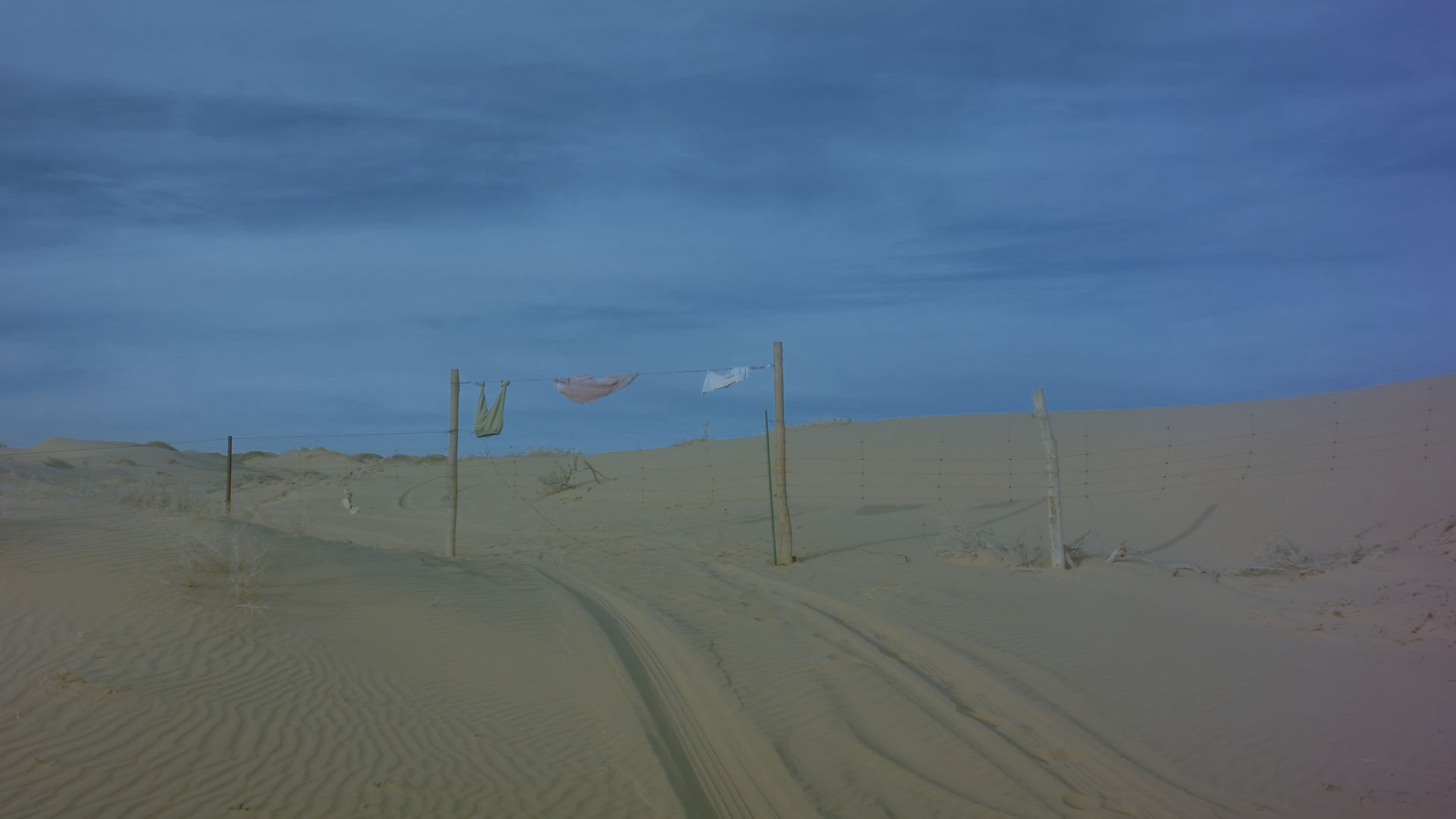
More wind, noise wind I
2023
double-channel video,21 min 12 sec
This essay film explores how the Gobi is perceived at the border between the real and the virtual, with wind and noise as clues. Here is a desertified salt lake and neighbouring desert pastures, where desertification and virtualisation are going hand in hand.
Both China and the West have satellite navigation systems. China is ambitiously deploying the Beidou (the Big Dipper in Chinese) system, a rival to GPS, linked with Chinese nationalism. In Inner Mongolia, herders can set up “digital fences” with digital coordinates, a further virtualization of fencing and privatization of the remote Gobi. More and more herders are using satellite systems to locate and search for animals, whereas in the past they relied on the local "tracking" knowledge.
China's "frontier" space is characterized by a lack of mobile signal base stations, leading to difficulty in communication and navigation. Perception of this space is based solely on traditional local knowledge, which brings with it disorientation, poetry, and sacredness. However, the frontier space is gradually being integrated into a virtual system, similar to what we already know in cities, as exemplified by the desert in the video.
I made a salt desert that exists in a pixelated state in the virtual world. It is in ghostly darkness due to being undetected most of the time (it takes time for the remote sensing system to update), which also reflects noisy state of the landscape in the age of remote sensing. These CG images and camera captured images all represent different perceptions of the desert.
I got acquainted with a real shamanic healer during my time living here, and we see each other almost every day, and she told me about the knowledge of the desert. In the video, I try to show a different shamanic perspective.

%20-%20YouTube%20-%20Google%20Chrome%202024_3_28%2019_25_33_.png)


